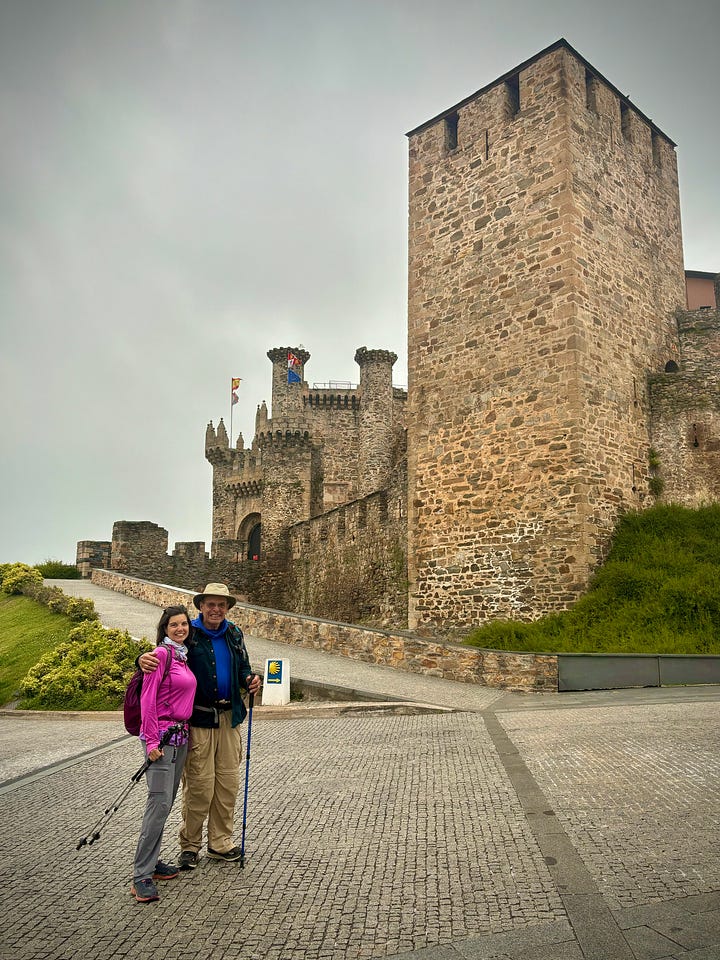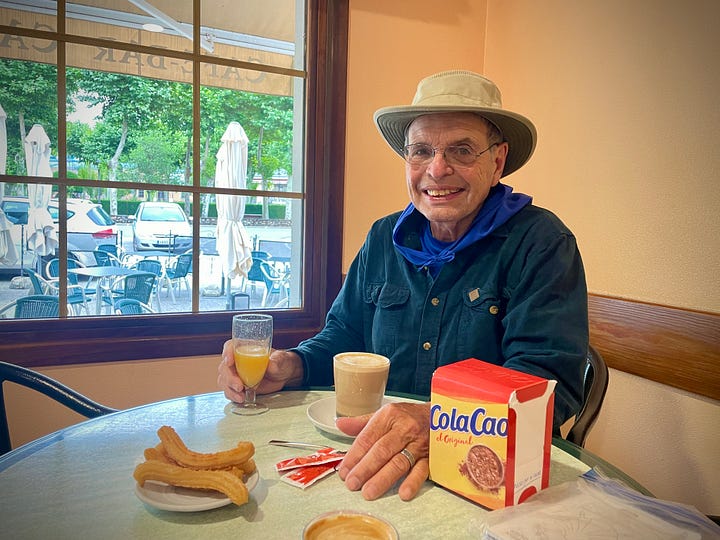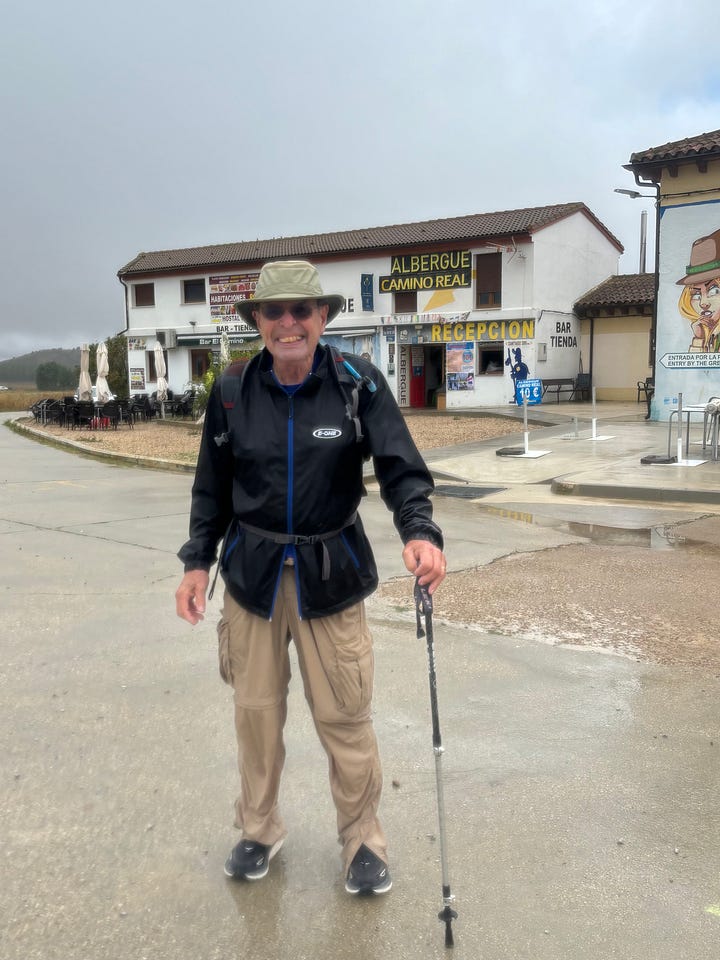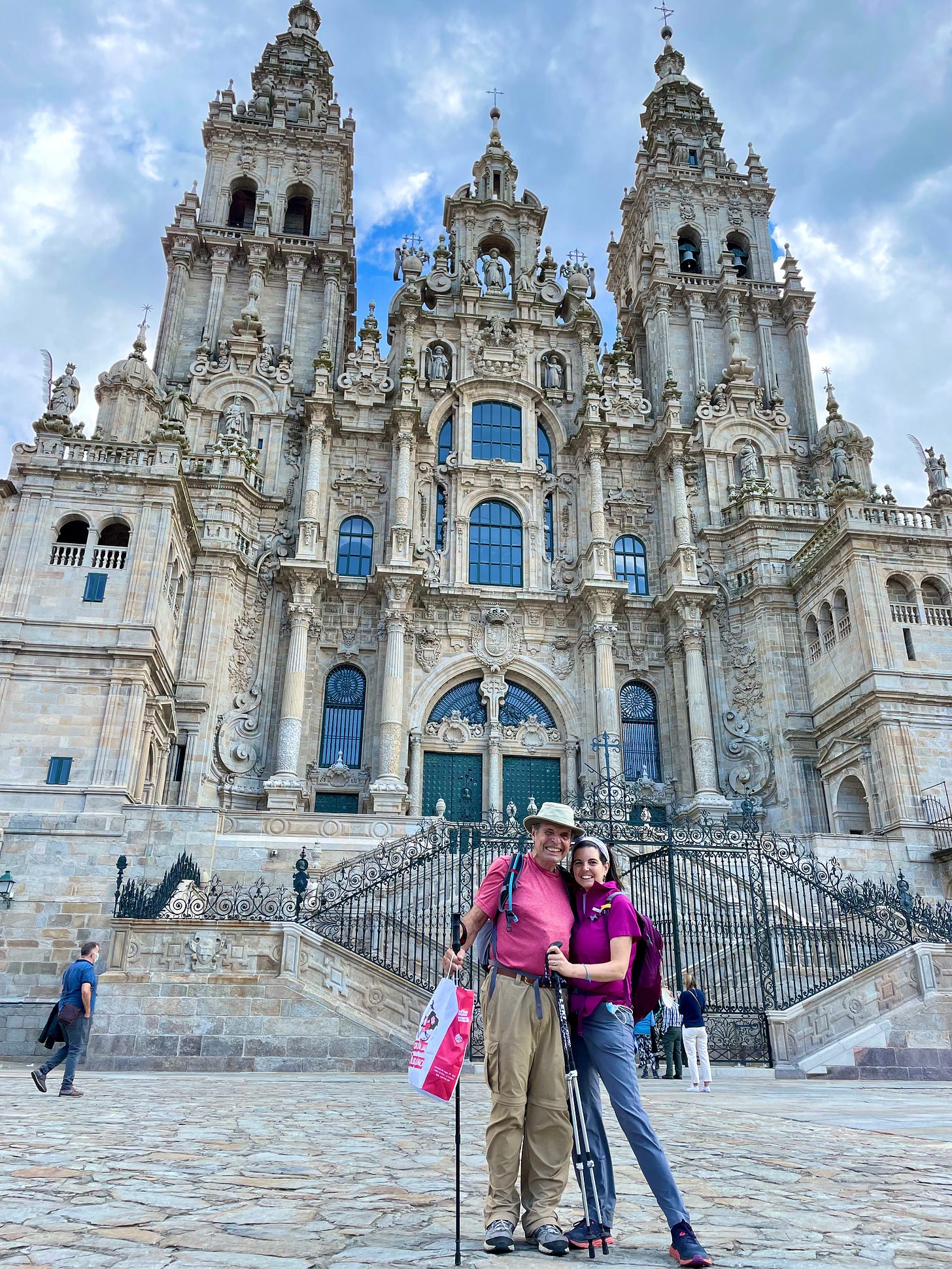011: The Camino Rule You Didn't Know You Needed
Sometimes the best things on the Camino aren’t in the guidebooks--like the second bar rule.
“I miss a real Spanish bar,” I thought to myself. I was on the Camino de Santiago in June. I was on the most popular route: The Camino Francés. It was time for my mid-morning snack.
The first bar was inundated with pilgrims. Behind the counters, the owners were hardly able to keep up.
We weren’t buying alcohol. A Spanish bar is the place you get coffee and toast in the morning, or a pincho de tortilla for a mid-morning snack. Or, yes, a late afternoon celebratory glass of beer or wine. If it’s a restaurant-bar, it’s also where you get the menú del día: a three course lunch—and biggest meal of the day in this country.
I was happy this place was doing such great business, but I wanted the slower pace I was used to at the bars in my own small Spanish town, where I live. I wanted to sit at the bar, make small talk with the staff, chat with the locals.
And that’s when one of my Camino rules came back to me. No, not any official rule—there are hardly any official rules for the Camino. But I have a couple.
Rebecca’s Rule #1: Don’t stop at the first bar.
This can seem risky as some Camino towns are so small they only have one bar. But Spain is the European country with the highest number of bars per person—1 for every 169 of us—so the chances are pretty good, especially on the most popular Camino routes, that a town has more than one.
The first bar gets all the attention as weary, hungry pilgrims, when they see a place for sustenance, don’t want to walk another step. That’s why the second bar puts up an ad for you to see just before you get into town. It may list their offerings, show some pictures.
What it should say is, “More authentic experience. Go where the locals go.” But maybe not. Because then too many people would come, and it would lose its charm.
There isn’t always an ad, though, so just trust me: Look for the second bar.
So my father and I walked past the first bar and came to Taberna Mateo.
A couple sat at one of the outdoor tables but Dad and I went in and sat at the bar. I ordered drinks for my father and myself and then dashed off to use the bathroom. (Rebecca’s Rule #2: Always use the bathroom when you stop at a bar. At least once, maybe more. Rebecca’s Rule #3: Always have your own toilet paper in your pocket. Especially if you’re at the first bar—they will most likely have run out of it by the time you get there.)
Upon my return from the bathroom, I saw a plate of tortilla de patatas sitting in front of my father. “Did you order that?” I asked.
“No,” he said. Which I should have suspected as my father speaks hardly a word of Spanish.
I asked the bartender and he said it comes with our drinks (tea for me and soda for my father).
“The pilgrims always stop at the first bar in a town,” he explained. “They don’t do this for the pilgrims. Here, I serve everyone something with their drink—here it doesn’t matter if you are a pilgrim or not. We are the same.” I smiled, then translated for my father. The second bar, I thought. Jackpot.
I grabbed the fork and asked the bartender, “tortilla with or without onions?” This is the age old debate among Spaniards—they all have an opinion. A tortilla is like a crustless quiche, cooked on the stovetop, with four guaranteed ingredients: oil, salt, potatoes, and eggs. Though—depending on which side of the fence you are on — it may have onions. Some bars offer it with or without. But many have only one or the other and wouldn’t consider making it any other way.
“With onions,” the bartender answered, his face a little brighter. And I knew what was coming: Only Spanish pilgrims would ask such a question. And, based on my accent, I was clearly not Spanish. “Where are you from?” I had just put a bite of the best tortilla I’ve ever had in my mouth; he patiently waited.
“The US,” I said. “But I live in Spain.” This nearly always guarantees further conversation—especially because there are lots of English speakers living in this country who don’t speak Spanish.
We conversed for a bit and I translated to include my father in the conversation.
The bartender excused himself to wait on a customer, but things didn’t end there. When a local sees a stranger at the bar (especially a woman at least thirty years younger), there will be looks of curiosity. And if that stranger seems open to talking, they’ll gladly engage. “It’s like family here,” one of the locals explained. The bartender rejoined the conversation between customers. The beer distributor arrived with the order. We all commiserated about the latest drug-related crime that was on the television.
After we left, my father said, “I could have stayed there for hours watching everything going on. That girl who was sitting outside with the tattoos—I think she’s the bartender’s girlfriend. Or the owner. Because when the beer guy pulled up, he talked to her first.”
My father left his hiking stick there by mistake, but we didn’t realize it until we were well past the town. I sent a WhatsApp message to a Camino friend that was behind us and she picked it up for us. The bartender told her, “An old guy left it here.” Dad is 76. He laughed when he heard this.
Both my friend and I speak Spanish. Would I have had this interaction otherwise? I’m not sure. But if I were about to head off on my first Camino, I’d try to pick up some Spanish as the Camino opens a whole lot more when you do.
Unless you’re my father. When people ask if he speaks Spanish, he just points to me and says, “That’s what she’s here for.”
A couple months later, Dad was doing some days on the Camino without me. Upon his return he said, “Did I tell you about the woman at the bar?”
“No. . .”
“Well, remember how you said go to the second bar? So I was at the second bar and I pulled out my Camino credential to get a stamp. And remember all that rain and how my credential got wet? It came apart at the seams. She didn’t speak a word of English, but when she saw my credential, she left and came back with tape. She taped the whole thing back together.”
Second bar, my friends. Second bar.
With love,
Rebecca
Scenes from the Camino: Camino Francés




What I’m Watching
Friends invited me to a movie a couple weeks ago. It was the first two episodes of this season’s “The Chosen” which have been released as a movie. I grew up Catholic, so though the movie was in Spanish (I live in Spain), I thought I had a good chance of understanding it.
I was wrong.
Imagine someone who’s been studying English for a few years picking up and trying to read a Bible. Town names, words, phrases—the Bible is filled with language we hardly use in our daily lives as English speakers.
But I did okay. I had the perfect amount of background knowledge in both the story and the language to at least get the idea of what was going on!
What does any of this have to do with the Camino? Well, Camino pilgrims are walking to where the supposed remains of St. James are located. He was one of the 12 apostles. The first to be martyred, in fact. So now I’m curious to go back and see how he is portrayed in earlier episodes of the series. (Though I’ll probably watch it in English. With Spanish subtitles.)
Ready to start planning your Camino?
Rebecca Weston is an American who walked her first Camino in 2012.
She helps people 45 and over plan their own walks on the Camino de Santiago through her business The Camino Calls.
She and her husband live in Spain in a town of 6500 people on the Camino del Norte. She’s walked more than a dozen Caminos, spent many days volunteering along the trail, and if she’s not walking one now, she’s planning the next—and would love nothing more than to help you plan yours, too.
Book your free 15-minute discovery call here.


You stopped at the second bar after searching for the winery that was closed. I followed and because of my Spanish a local woman told me “oh no, it’s never open”. I ended up at that same bar too to pick up your dad’s stick. Like you I had a coffee and used the bathroom and I try never to stop at the first bar as well. I think of the family trying to make a living and so stopping at the 2nd bar is always my mission. But sometimes there isn’t a second bar so I walk on. I remember where your dad was standing all wet. I stayed at the Albergue across the street from Albergue Camino Real and met a Dane and a Swede and we had no rain, but delightful conversation